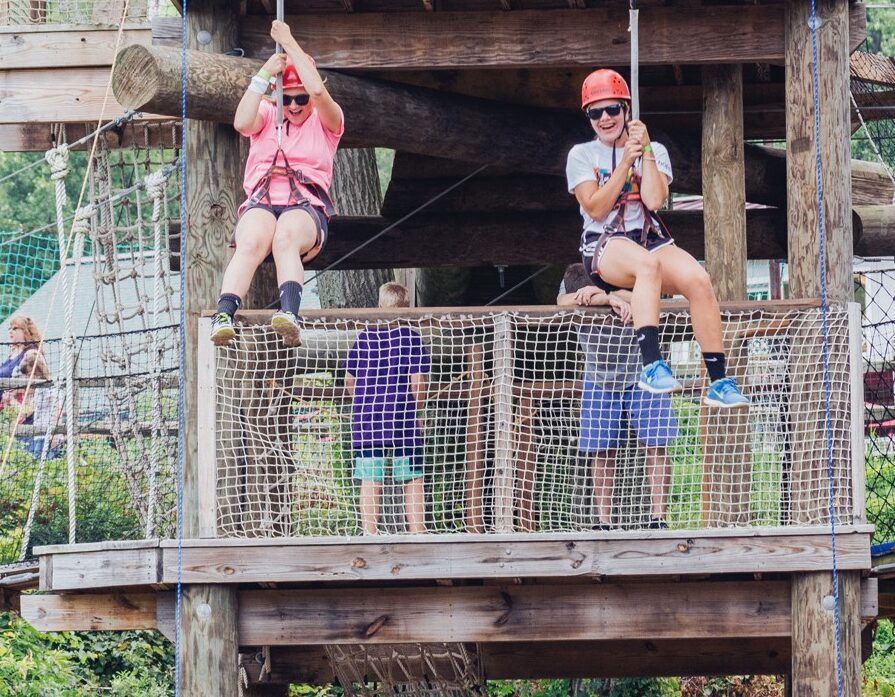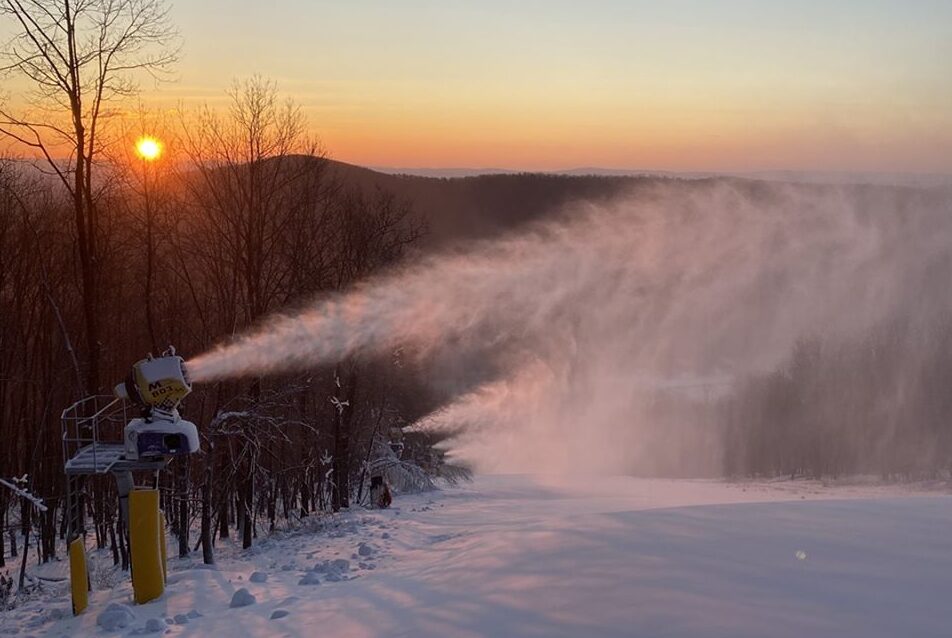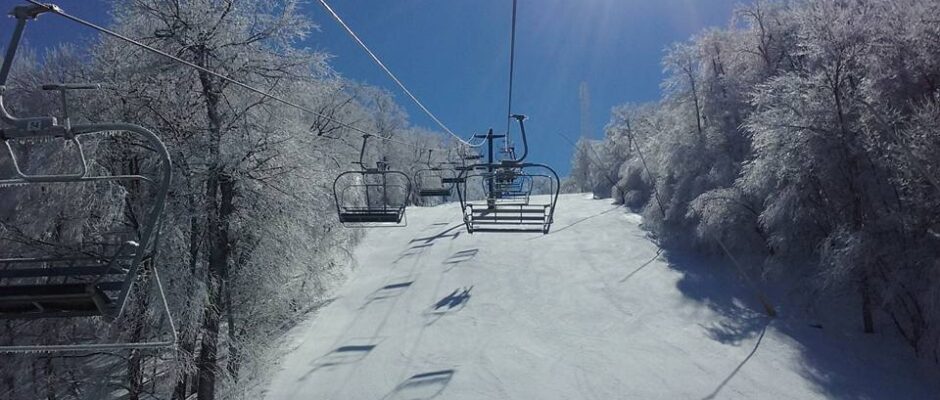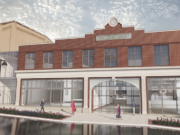Ski culture runs deep in Pennsylvania. The state’s first commercial resort, the Big Boulder Ski Area, opened in 1949 after initially operating as a company retreat for the Lehigh Coal & Navigation Company. Since then, Pennsylvanians have embraced the slopes — first on skis, later on snowboards — thanks to cold winters and a landscape undulating with mountains and valleys. The state is currently ranked sixth in the nation for skier visits.
According to its website, the Jack Frost Big Boulder Ski Resort in the Pocono Mountains is also where commercial snowmaking was first successfully deployed. The original machine “resembled a lawn sprinkler used to emit crystals that looked and acted like snow.” This was an important technological advancement, especially today when many of Pennsylvania’s ski resorts find themselves operating in fits-and-starts, struggling to maintain regular hours in the midst of balmy 40, 50 and even 60-degree winter temperatures that fuel rain instead of the white stuff.

“We got off to a good start with snowmaking this year thanks to cold weather after Thanksgiving,” says Donna Himes, marketing director at Blue Knob All Seasons Resort in Claysburg. “Then warmer temperatures returned, along with rain, which left us starting over again around the holidays.”
By The Numbers
Himes cannot determine whether the warmer temperatures are just the result of an “off” year or if this is the new normal. A recent report published by a team of scientists at Purdue University suggests the latter. The report, Assessing Potential Winter Weather Response to Climate Change and Implications For Tourism in the U.S. Great Lakes and Midwest, includes Pennsylvania and analyzes data based on two scenarios — one where little is done to reduce emissions and another that reflects more aggressive emissions reductions. Based on today’s levels, the data suggests that Pennsylvania’s winters will likely shorten by as much as a month by mid-century.
According to James Shortle, distinguished professor of agricultural and environmental economics at Penn State University, the magnitude of the outcome depends upon which path the world follows. To what degree, and with how much urgency, will nations act to reduce greenhouse gas emissions?
“Reducing emissions today will have an impact, although it would take a long time to realize,” says Shortle. “In the near-term, the report predicts shorter and warmer winters, less natural snow, and deteriorating conditions for manmade snowmaking.”
From lift tickets and equipment rentals to lodging and meals, Pennsylvania’s ski industry annually employs 14,500 people and has a $743 million economic impact on the state and local economies.Linda Irvin
This scenario could eventually make it difficult for Pennsylvania ski resorts to meet a common benchmark for a successful season: operating for at least 100 days. This is unwelcome news for local businesses and others dependent upon the winter recreation industry.
“From the Seven Springs Mountain Resort in the western part of the state’s Laurel Highlands, to the Poconos and Shawnee Mountain Resort in the east, Pennsylvania boasts 26 ski areas that attract more than 2.6 million visitors each winter,” says Linda Irvin, executive director of the Pennsylvania Ski Areas Association. “From lift tickets and equipment rentals to lodging and meals, Pennsylvania’s ski industry annually employs 14,500 people and has a $743 million economic impact on the state and local economies.”

With its rivers, lakes, bike paths, hiking trails, and campgrounds, Pennsylvania also contributes to a national recreation economy that is one of the country’s fastest growing sectors. According to the Outdoor Industry Association, year-round outdoor recreation in Pennsylvania generates approximately $29.1 billion in consumer spending and 251,000 direct jobs each year.
Course Correction
To that end, Pennsylvania’s ski resorts are taking proactive steps towards reorganizing and rebranding themselves as year-round destinations.
Blue Knob promotes its 9-hole golf course and conference center — ideal for events ranging from weddings to wine tastings to beer festivals. The resort’s proximity to Blue Knob State Park also attracts hikers, mountain bikers and other outdoor enthusiasts.
Roundtop Mountain Resort, located just 20 minutes outside of the state capitol in Lewisberry, features summer camps (for children and adults), a ropes course, ziplines, paintball, and facilities for weddings and other events. Some Pennsylvania ski resorts also sell discounted season passes, individually or as part of a coalition of other resorts, in advance of winter to help safeguard against an unpredictable season.

In addition to tweaking their offerings, a growing number of local ski resorts are actively working to reduce their carbon footprints, playing their own part in preserving winter. Vail Resorts, which acquired Roundtop Mountain Resort and its sister properties Liberty Mountain Resort and Whitetail Resort in 2019, has rolled out its Epic Promise Commitment to Zero. The program’s goal is achieving zero net emissions and adding zero waste to landfills by 2030. This project involves transitioning to renewable energy sources like wind and solar at all of the company’s resorts, investing in energy-efficient snowmaking, and implementing green building upgrades.
“Since acquiring the Roundtop, Liberty and Whitetail resorts in 2019, we have invested $3.5 million into equipment and technology capable of making more snow with less energy,” says Jamie Storrs, senior director of communications at Vail Resorts. “We are just getting started with these investments that are made with the Epic Promise in mind.”
Snow is at the core of our winter business and we don’t want it to go away, so we are always seeking ways to adopt practices that will benefit the natural environment.Jamie Storrs, Vail Resorts
The initiative also promotes the use of compostable and recycled-content items to reduce the amount of waste reaching landfills. In addition, the company mitigates its impact on forests and wildlife by planting or restoring an acre of forest for every acre displaced by its operations.
“Snow is at the core of our winter business and we don’t want it to go away, so we are always seeking ways to adopt practices that will benefit the natural environment,” adds Storrs. “The Epic Promise is a pretty lofty goal, but one that is important to us. We look forward to rolling that out in Pennsylvania to help these new resorts in our family reduce emissions and waste while providing a good experience for visitors.”
The Path Forward
In December, North America’s first indoor ski and snowboard park opened at a mega-mall just off the New Jersey turnpike. At only three feet above sea level, the 16-story, 180,000-square foot Big SNOW American Dream maintains a constant 28 degrees to support 5,500 tons of snow. It boasts three slopes, four lifts, a terrain park and even a ski chalet-themed retail store.
The jury is out on whether shopping malls represent the future of skiing in the region, or whether environmental efforts will pay off for the ski industry in Pennsylvania and throughout the nation. One thing is certain, while new equipment and green practices show promise, winter and its associated snow sports cannot be saved by one industry alone.

According to the Colorado-based non-profit Protect Our Winters (or POW), individuals must become vocal advocates for reducing emissions, as soon as possible.
“We absolutely believe that solving the climate crisis is possible,” says Anja Semanco, POW’s Communications Coordinator. “It starts with adopting policies and practices that support limiting global warming to below 1.5°C and pursuing net zero emissions by 2050.”
Towards this end, Semanco and her colleagues at POW encourage their membership — outdoor enthusiasts from around the country — to drive civic participation at the margins.
“By educating, registering and turning out enough voters in the critical geographies where participation is needed most, POW believes they can shift the nation’s response to the climate crisis,” she adds.
While there are individual actions a person might pursue to do their part in reducing emissions — from driving and consuming less to planting trees (lots of them) and using energy efficient light bulbs and appliances — POW wants the onus of responsibility on the corporations and industries who have had the greatest impact.
“It’s important that we, as outdoor enthusiasts, get off the sidelines and hop into climate advocacy, even if it’s imperfect,” says Semanco. “There’s no time to waste.”
To support Pennsylvania’s Ski Resorts, visit skipa.com to learn about skiing, snowboard and snow tubing events taking throughout the Commonwealth during 2020.
SARA M. KAPLANIAK works as a freelance writer and communications consultant. She lives in Camp Hill.



